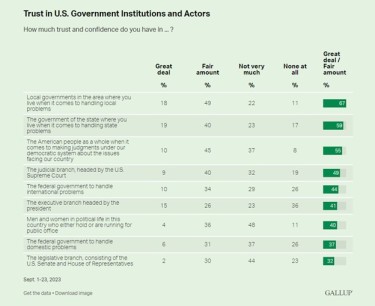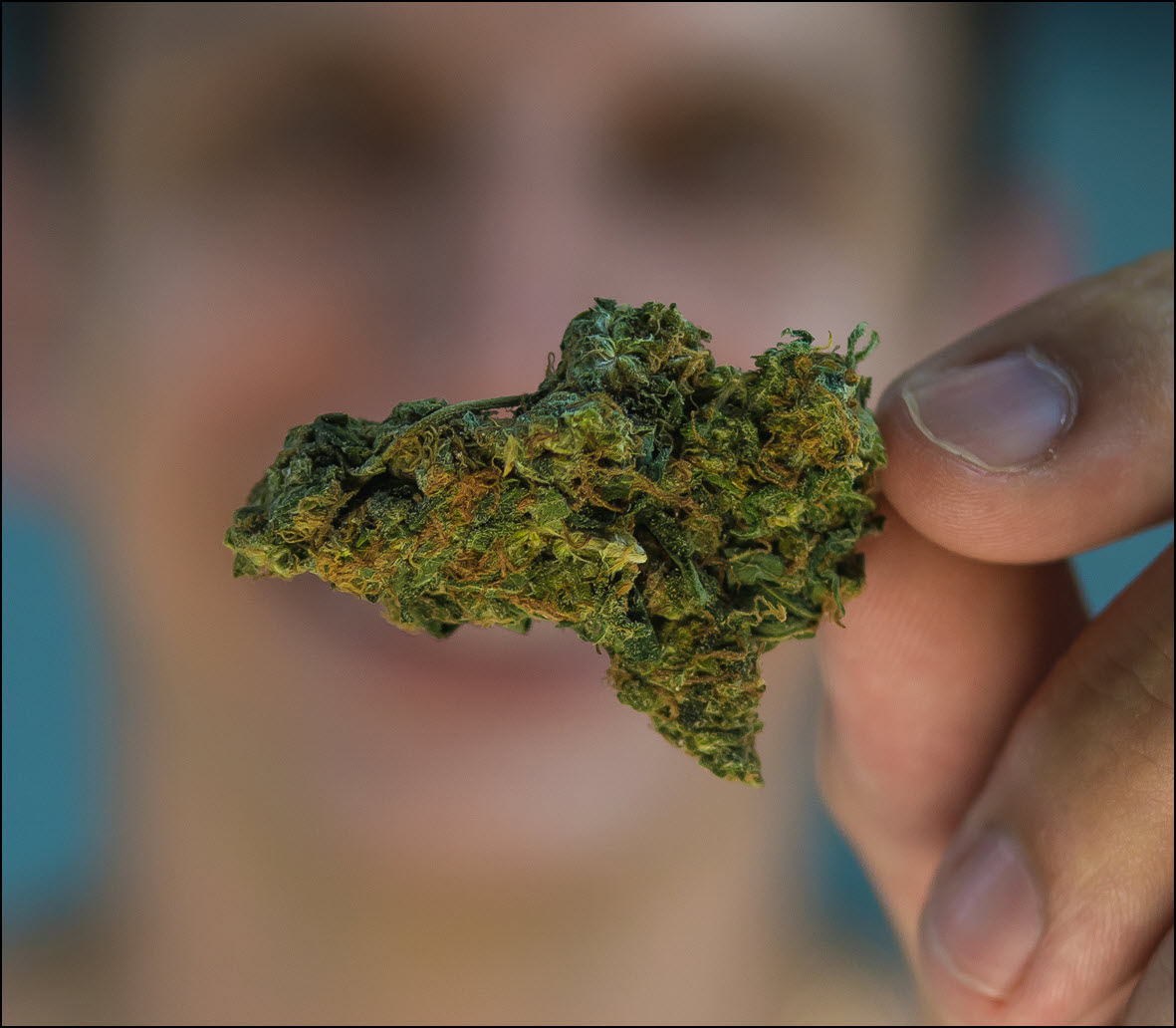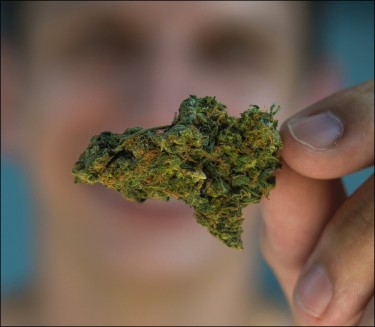Cannabis News
New Lawsuit Filed Against the US Government Says Cannabis Prohibition is Now Illegal Based on States’ Legal Marijuana Programs
Published
2 months agoon
By
admin

New lawsuit puts in question the rationale behind marijuana prohibition
If you’re a regular reader of my articles, you know I’ve long held that the federal government’s blanket prohibition on drugs like marijuana is an irrational, unethical, and unconstitutional violation of individual liberty. The harsh criminalization of a plant that has been used by humans for thousands of years is the height of authoritarian overreach, driven more by reefer madness propaganda than any legitimate public policy rationale.
Well, it turns out I’m not alone in viewing the federal drug war as a catastrophic failure and affront to common sense. A group of cannabis companies has filed a major lawsuit challenging the very legal foundations of marijuana’s prohibition under the Controlled Substances Act. Their argument? That the federal ban no longer has any rational basis when dozens of states have implemented regulated programs that have replaced the illicit market the original law aimed to eliminate.
This lawsuit represents a potentially groundbreaking direct assault on the crumbling facade of marijuana prohibition. In this article, we’ll dive deep into the core arguments advanced by the plaintiffs, evaluate the legal prospects of their case, and discuss whether it could finally force the government’s hand. We’ll also explore actions individuals can take to further apply pressure and make our voices heard on this crucially important issue.
Regardless of the outcome, this bold litigation demonstrates that the tides have turned irrevocably against the draconian policies of the failed war on drugs. The march toward legalization may have started as a revolution, but it is increasingly becoming a inexorable reckoning that even the federal government cannot defy forever.
The lawsuit in question was filed by a group of marijuana companies including multi-state operator Verano Holdings Corp., Massachusetts-based Canna Provisions, Wiseacre Farm, and Treevit CEO Gyasi Sellers. They are represented by the prominent law firms Boies Schiller Flexner LLP and Lesser, Newman, Aleo and Nasser LLP. The lawsuit alleges that the federal government’s ongoing cannabis prohibition under the Controlled Substances Act (CSA) is unconstitutional and irrational given the widespread state-level legalization and regulation that has occurred. As the filing states:
“Dozens of states have implemented programs to legalize and regulate medical or adult use marijuana…And by providing consumers with safe, regulated, and local access to marijuana, those states have reduced illicit interstate commerce, as customers switch to purchasing state-regulated marijuana over illicit interstate marijuana.”
This new 32-page filing is a response to the federal government’s attempt to dismiss an underlying lawsuit first brought by the companies in October 2022. That original complaint argued that “the federal government has long ago abandoned the goal of eliminating marijuana from commerce” and that “even if Congress still wished to eliminate interstate transactions in marijuana in their entirety (it does not), it has no rational basis for banning state-regulated activities that reduce interstate traffic in marijuana.”
The crux of the case centers on overturning the 2005 Supreme Court decision in Gonzales v. Raich, which held that the federal ban on cannabis preempted state legalization laws due to Congress’s power to regulate interstate commerce. As the plaintiffs’ latest filing contends:
“In the two decades since Raich, all the legislative and operative facts on which Raich’s conclusion rested have changed. It is therefore necessary to assess Congress’s regulation of intrastate marijuana based on the new regulatory framework and new factual circumstances.”
By filing this lawsuit and seeking to overturn Raich, the cannabis companies aim to finally eliminate the threat of federal enforcement in legal state markets. If successful, it would open the door for state-licensed businesses to access financial services, claim tax deductions, and operate without the cloud of residual illegality that has hampered the industry.
While the odds of the Supreme Court revisiting its decision are difficult to gauge, the filing of lawsuits like this plays a vital role in applying public pressure and highlighting the dissonance between state and federal marijuana laws. Even if the case itself does not prevail, it shines a spotlight on the irrationality of the government’s current stance and forces lawmakers and enforcement agencies to contort themselves further to justify an untenable policy kurns out of step with public opinion and modern governance.
Prominent litigator David Boies, whose prior high-profile cases include the Department of Justice lawsuit against Microsoft and the overturning of California’s same-sex marriage ban, made the sweeping argument that:
“Americans believe that cannabis should be legal and available subject to reasonable regulation by the states…The federal government lacks authority to prohibit intrastate cannabis commerce. Outdated precedents from decades ago no longer apply—the Supreme Court has since made clear that the federal government lacks the authority to regulate purely intrastate commerce.”
By methodically deconstructing the legal underpinnings of prohibition, pushing for judicial remedies, and elevating the issue through the courts, this lawsuit contributes to further eroding the false narratives that enabled the cruel excess of the war on drugs. Initiatives like this are crucial steps towards finally ending failed marijuana criminalization once and for all.

SOURCE: GALLUP
Given that national polls consistently show a solid majority of Americans supporting legalizing marijuana, and the fact that 38 states have already implemented some form of legal cannabis program, one might reasonably ask: why is the federal government dragging its feet so much on this issue?
The unfortunate truth is that the sluggish pace is very much by design. The complex bureaucratic maze surrounding federal drug policies, centered on agencies like the Drug Enforcement Administration (DEA) and laws like the Controlled Substances Act (CSA), has been structured in a way that makes meaningful reform excruciatingly difficult and subject to endless delays.
The DEA has historically been able to take a decade or more just to reject rescheduling petitions, often without providing any substantive rationale beyond simply stating “it’s the law.” This byzantine process essentially allows the agency to run out the clock indefinitely on any cannabis policy changes it ideologically opposes.
But the bigger impediment to legalization is the very existence of the CSA itself and its unconstitutional centralization of power over drug manufacturing, distribution, research, and consumption. By arrogating control over Americans’ free choice as individuals under the flimsy pretext of interstate commerce regulation, the CSA represents a startlingly authoritarian federal overreach into what should be a matter of personal liberty.
Of course, the self-serving motives behind Congress’ reluctance to amend or abolish this draconian statutory regime are not exactly a mystery. With only 32% of the U.S. public expressing trust in Congress to act in the national interest, lawmakers have amply demonstrated whose interests they really serve – chiefly those of deep-pocketed special interests like the pharmaceutical industry.
Numerous studies have shown that after states legalize medical marijuana, drug companies see sharp declines in revenues and prescription numbers for lucrative pain medications as patients turn to cannabis as an alternative treatment. With legal marijuana inevitably disrupting Big Pharma’s profit streams, it’s no surprise these powerful corporate forces have aggressively lobbied Congress to maintain cannabis prohibition and protect their bottom line.
So while a majority of the American people have left the Reefer Madness propaganda behind, Congress continues to peddle laughably disingenuous narratives about marijuana’s dangers precisely because it remains so beholden to the powerful moneyed interests profiting from the drug war status quo.
Until the people demand full representation from their elected officials instead of fealty to corporate overlords, we are likely to see this same cynical political theater play out repeatedly. Even outright legalizing marijuana at the federal level may not dismantle the bureaucratic fortresses that have been cleverly constructed to impede American’s free access to cannabis as a matter of individual choice.
While lawsuits like this are invaluable for shining a light on the absurdity of continued federal cannabis prohibition, it’s unlikely the Supreme Court will revisit its precedent and overturn the Controlled Substances Act – at least not through this particular case. The inertia and institutional resistance to marijuana legalization remains powerful.
The Biden administration will no doubt continue to cite its modest cannabis pardons and drug rescheduling review as major reform “wins.” But such half-measures are mere political theater, failing to deliver on Biden’s campaign promises of full decriminalization and expungement of prior records.
Ultimately, the cruel overreach of the CSA cannot be undone through bureaucratic nibbling around the edges. To reclaim our inalienable rights to bodily autonomy and cognitive liberty, we must reject the unconstitutional foundations of this oppressive statute entirely at every level of society and governance.
Where the federal government continues to fail, it falls to the people themselves to enact the drug policy change we deserve through local and state reforms. Most Americans still place high trust in their municipal and state governments over Washington D.C. It is here, in our own backyards, that we can make real progress.
While the latest lawsuit highlights the building momentum to end the irrational war on cannabis, true liberation will only come from a flourishing of grassroots activism. Making that dream a reality will require each of us to do our part by demanding more from our communities and our representatives. The American people are ready to legalize freedom – the question is whether our institutions can evolve quickly enough to get out of the way.
SUING TO GET WEED LEGAL, READ MORE…
You may like
-


The 3 Biggest Winners from Rescheduling Cannabis?
-


Tribally owned marijuana store numbers up 25% since 2023
-


How Potent is Illegal Weed
-


Is Your Kid Smoking or Vaping Weed?
-


Press Release: PsychedelicNewsWire Named Official Media Sponsor of the 4th Annual Psychedelic Therapeutics and Drug Development Conference
-


Memorial Day’s best weed, prerolls, carts, and more 2024
Cannabis News
The 3 Biggest Winners from Rescheduling Cannabis?
Published
6 hours agoon
May 20, 2024By
admin

President Joe Biden’s support of the administration’s decision to reschedule cannabis from Schedule I to Schedule III is likely to result in considerable financial benefits for large, legal cannabis businesses and the illicit market. This action may lessen the restrictions imposed by IRS tax regulation 280E, which has banned cannabis businesses from deducting standard business expenditures. Which cannabis firms will gain the most from this change?
The illicit market will get a huge boost by removing the punshiments associated with getting caught dealing or transporting a Schedule 1 drug. Now that the fines, prison sentences, and desire to enforce Schedule 3 crimes is lessened, look for the illicit market to boom across America. It is estimated that the illegal cannabis market is 3x the size of the legal US market as of 2024, so look for that multiple to expand if Schedule 3 is enacted. Removing a negative incentive in economics always leads to predictable action.
In the legal market, the largest MSOS, or those that paid the most taxes, have the most to gain by a repeal of the 280E tax code and future tax credit or refunds coming their way
Industry Leaders in Tax Payments
Rescheduling cannabis will abolish the onerous 280E tax law, potentially freeing up more than a billion dollars in tax savings for the business. Curaleaf (OTC: CURLF) and Trulieve (OTC: TCNNF), both of which make considerable tax payments, are among the firms most likely to profit. Repealing 280E limits would allow these businesses to deduct typical business costs, greatly improving their financial situation.
Truelive alone stands to get $113,000,000 in tax refunds and savings!
Senior analyst Pablo Zuanic of Zuanic & Associates believes that these tax reductions may result in improved cash flows, allowing these businesses to reinvest in development and growth. In the quickly changing cannabis market, having this kind of financial flexibility is essential for keeping a competitive advantage and encouraging creativity.
Zuanic has consistently highlighted the disparity between current market valuations and the potential upside, particularly if federal legalization occurs. He emphasizes that immediate cash flow improvements could lead to substantial revaluation of these companies. By enabling the deduction of ordinary business expenses, the financial statements of these companies would more accurately reflect their true profitability, attracting more investors and boosting market confidence.
The potential tax savings are a temporary relief and a game-changer for the industry. Analysts believe that the improved cash flow could result in substantial revaluations of cannabis companies. For Curaleaf and Trulieve, this change would mean their financial statements would better represent their actual profitability, leading to increased investments and further expansion opportunities.
Curaleaf’s Financial Outlook
Beacon Securities’ Russell Stanley sheds light on Curaleaf’s financial landscape, highlighting the company’s adept management of operating cash flow. This proficiency facilitated a successful debt repurchase post-quarter, significantly enhancing its financial stability. With the anticipated rescheduling of cannabis and the potential enactment of the SAFER Banking Act, Curaleaf stands to benefit from a transformed financial environment, potentially witnessing a substantial surge in its operating cash flow by up to 92% and free cash flow by 188%.
Wedbush Securities recently released a report on Curaleaf, elevating the stock’s 12-month price target from $6.00 to $7.00 while maintaining a buy recommendation. The report underscores Curaleaf’s commendable performance in key domestic markets like Connecticut, Arizona, Maryland, and New York. Projections indicate a revenue uptick to $1.50 billion by 2025, coupled with improvements in overall profitability. This optimistic forecast reflects the company’s robust financial position and its strategic market presence.
Proactive debt management techniques and well-thought-out market positioning highlight Curaleaf’s potential for long-term development and financial success in the changing cannabis industry. Curaleaf is in a strong position to benefit from the rescheduling of banking and cannabis legislation, which may lower regulatory obstacles and further establish the company’s leadership in the cannabis market.
Unlocking Trulieve’s Growth Potential
Trulieve’s Growth Trajectory
Trulieve’s growth trajectory is drawing attention, particularly from Needham’s Matt McGinley, who emphasizes the company’s operational efficiency. McGinley points out that Trulieve has achieved its highest gross margin and EBITDA rates observed in over two years, indicating strong operational performance. This efficiency positions Trulieve favorably for capitalizing on emerging opportunities in the cannabis market.
Key legislative advancements in pivotal markets such as Florida and Pennsylvania present significant growth potential for Trulieve. As these markets potentially transition to adult-use cannabis, Trulieve stands to benefit from increased demand and expanded market reach. Leveraging its operational efficiency and established market presence, Trulieve is poised to capitalize on these legislative shifts to drive revenue growth and enhance shareholder value.
Trulieve is positioned to be a major participant in the growth of the cannabis sector due to its strategic focus on operational excellence and its flexibility in responding to changing regulatory environments. Trulieve is in an excellent position to maintain its growth trajectory and establish itself as a top cannabis supplier, thanks to encouraging legislative changes and a proven track record of high performance.
Analysts’ Industry Impact Assessment
Viridian Capital Advisors offers insights into the industry impact, noting that ten MSOs exceeded EBITDA estimates by $37 million in the first quarter of 2024. This performance suggests that initial projections may have been conservative, indicating a positive trend for cannabis companies. Analysts from Viridian specifically highlight Curaleaf and Trulieve, among others, as poised to benefit from the financial changes resulting from the removal of 280E tax restrictions.
The long-term outlook for the cannabis industry remains bullish, with potential federal legalization driving substantial valuation growth. Pablo Zuanic from Zuanic & Associates suggests that the US market alone could justify over $110 billion in valuations by 2030 assuming federal legalization. The removal of tax restrictions would directly impact bottom lines, potentially leading to significant valuation increases for many cannabis stocks.
All things considered, the possible repeal of the 280E tax laws offers cannabis businesses a big chance to improve their financial standing and market value. As analysts speculate that early projections may have overestimated the sector’s potential, businesses like Curaleaf and Trulieve might gain from more cash flow and better profitability, setting them up for long-term success in the changing cannabis market environment.
Bottom Line
The impending rescheduling of cannabis and the potential repeal of IRS tax regulation 280E offer a substantial opportunity for cannabis companies to strengthen their financial positions and market appeal. Industry leaders such as Curaleaf and Trulieve stand to benefit significantly, with projected increases in cash flow and profitability paving the way for sustained growth. Analysts anticipate a positive market response, with potential valuation growth and a bullish outlook for the long-term trajectory of the cannabis industry. These regulatory changes mark a pivotal moment, allowing businesses to capitalize on newfound financial flexibility and attract investor confidence. As the sector continues to evolve, Curaleaf, Trulieve, and other key players are positioned to thrive, driving innovation and shaping the future of the cannabis market.
WINNERS AND LOSERS FROM SCHEDULE 3, READ ON…


The average THC potency of illegal weed is only 16%, same as legal cannabis says DEA?
In the ever-changing landscape of cannabis, a striking revelation has come from the U.S. Drug Enforcement Administration (DEA). A recent statement established that the average potency of illicit marijuana flower stands at a industry standard of 16%. Understanding the implications of such a percentage requires a deeper dive into the realm of cannabinoids, particularly THC (tetrahydrocannabinol).
The Evolution of THC Potency
THC is the main psychoactive compound in marijuana, responsible for the “high” that users experience. The potency of marijuana, measured by its THC content, has dramatically increased over the past few decades. To understand the context:
-
1980s:The average THC content of seized marijuana was below 4%.
-
1990s: This figure began to climb, reaching around 5-6%.
-
2000s: Potency continued to increase, hitting approximately 10-12%.
-
2020s: Current reports indicate an average of 16%, with some samples even exceeding 30%.
This increase is primarily due to advanced cultivation techniques, genetic selection, and the growing demand for stronger marijuana.
Factors Contributing to Increased THC Potency
Several factors have contributed to the rising THC levels in illicit marijuana:
-
Selective Breeding: Growers have increasingly focused on breeding strains with higher THC content to meet market demand.
-
Advanced Cultivation Techniques: Techniques such as hydroponics, controlled environments, and optimized nutrient delivery have enabled the production of more potent marijuana.
-
Genetic Modification: Some strains have been genetically modified to enhance THC production.
Public Health Implications
The rise in THC potency has several significant public health implications:
-
Increased Risk of Negative Effects
-
Heightened Anxiety and Paranoia: Elevated THC levels can induce intense anxiety and paranoia, especially in inexperienced users or individuals with existing mental health issues.
-
Acute Psychosis: The likelihood of encountering psychotic episodes rises significantly with higher doses of THC.
-
Cognitive Decline: Prolonged use of marijuana with high THC content can result in enduring cognitive impairments, particularly impacting memory and learning abilities.
-
Adolescents: Young users are more susceptible to the negative effects of high-THC marijuana, including impacts on brain development.
-
Individuals with Mental Health Issues: Those with pre-existing mental health conditions may experience exacerbated symptoms.
Regulatory and Law Enforcement Challenges
The DEA’s report underscores significant obstacles faced by law enforcement and regulatory agencies:
-
Persistent Black Market: Despite legalization in several states, the black market for marijuana persists, often offering more potent products than those available in legal dispensaries.
-
Ensuring Consumer Safety: The unregulated nature of black market products results in unpredictable potency and potential contamination with harmful substances.
To address these issues, regulatory bodies need to:
-
Implement Stricter Controls: Introduce more stringent regulations for marijuana potency in both legal and illegal markets.
-
Increase Monitoring and Enforcement: Enhance efforts to monitor and dismantle illegal growing operations.
-
Educating Consumers: Consumer education is crucial in mitigating the risks associated with high-THC marijuana
-
Public Awareness Campaigns: Launch campaigns to inform the public about the potential dangers of high-THC marijuana.
-
Educational Programs: Develop programs targeted at specific groups, such as adolescents, to educate them about the risks.
Key points to emphasize in these programs include:
-
Understanding THC Levels: Educate consumers on how to read and understand THC levels on product labels.
-
Recognizing Symptoms of Overconsumption: Teach users how to recognize signs of overconsumption and what to do if they experience adverse effects.
-
Safe Consumption Practices: Promote safe consumption practices, including starting with low doses and waiting to see the effects before consuming more.
Future Trends and Research
Ongoing research and monitoring are essential to adapt to the evolving marijuana market:
-
Long-term Health Effects: Conduct studies to understand the long-term health effects of high-THC marijuana use.
-
Impact on Mental Health: Investigate the relationship between high-THC marijuana use and mental health conditions.
-
Comparative Studies: Compare the effects of high-THC marijuana with other forms, such as CBD-dominant strains, to provide a comprehensive understanding of marijuana’s impact.
Potential Solutions and Innovations
To address the challenges posed by high-THC marijuana, several solutions and innovations can be explored:
-
Development of Low-THC Strains: Encourage the development and use of low-THC, high-CBD strains that provide therapeutic benefits without strong psychoactive effects.
-
Improved Testing Methods: Invest in better testing methods to accurately measure THC content and detect contaminants.
-
Policy Reform: Advocate for policy reforms that support research and responsible use, including:
-
Incentives for Low-THC Products: Provide incentives for the production and sale of low-THC products.
-
Support for Medical Marijuana Research: Increase funding and support for research into the medical uses of marijuana.
Industrial and Economic Implications
The rise in THC potency also has significant industrial and economic implications:
The marijuana industry has become a significant economic driver in states where it is legal, contributing to tax revenues and job creation.
However, the black market remains a substantial challenge:
-
Revenue Losses: Illegal sales undermine tax revenues that could be used for public health and safety programs.
-
Market Competition: Legal businesses face unfair competition from black market operators who do not adhere to regulatory standards.
Engaging Stakeholders and Community
A critical aspect of addressing the challenges associated with high-THC marijuana is engaging with and gaining the support of local communities, policymakers, and industry leaders. The Ohio company has launched outreach programs to educate stakeholders about the benefits of bioplastics and the specific advantages of using hemp as a raw material.
Community involvement is crucial, especially in providing local farmers with the tools and knowledge needed to transition to hemp cultivation. Through:
-
Training Sessions
-
Pilot Programs
The company aims to build a robust local supply chain that can sustainably support large-scale bioplastic production.
Conclusion
In conclusion, the DEA’s report on the average THC potency of illicit marijuana flower reaching 16% highlights the significant changes in the marijuana landscape over recent decades. This increase poses new challenges for public health, regulation, and consumer safety. Addressing these challenges requires a multi-faceted approach involving education, regulatory reforms, technological advancements, and community engagement. By fostering a comprehensive understanding of the risks and benefits associated with high-THC marijuana, stakeholders can work together to ensure that the benefits of marijuana legalization are maximized while minimizing potential harms. This approach promises a healthier, safer future for all users and communities involved.
IS WEED REALLY GETTING STRONGER, READ ON…


Marijuana for recreational and medicinal purposes is becoming more widely available and simpler to purchase every day. Furthermore, opinions about the drug’s possible risks have changed as a result of recent legislative modifications, especially among young teenagers.
While proper use of marijuana can offer health benefits for specific conditions, inappropriate use can lead to a variety of problems. It can severely impact health, situational judgment, memory, coordination, and more.
Given that marijuana has rapidly become a much more commonly used drug among young people, it is crucial to recognize the main signs of marijuana use in teens to ensure their safety and well-being.
Statistics on Child Marijuana Use
Though the stats may surprise you, marijuana is the most often used narcotic among teenagers. Among children between the ages of 12 and 17, the National Center for Drug Abuse reports that:
– Nearly 44% have tried marijuana in their lifetime, up from 37% in 2019.
– 35% used marijuana in the past year.
– Almost 7% of 12th graders use marijuana daily.
Regretfully, eighth, ninth, and tenth kids are exposed to an alarmingly high level of marijuana. Early usage is problematic since those who start using earlier have a greater likelihood of heavier use later in life.
How THC Impacts the Brain
The active element in cannabis is tetrahydrocannabinol (THC), which produces the “high” associated with marijuana. THC can be ingested by smoking cannabis flowers, vaping concentrated forms, or eating THC-infused foods. THC impacts the brain by interfering with processes that are typically controlled by naturally existing endocannabinoids.
The brain grows from birth to the mid-twenties, and consuming marijuana at a young age can interrupt this important development. Early marijuana usage appears to influence brain development, according to recent research.
The effects of cannabis on the brain are extensive:
– Executive Functioning: Skills necessary for daily life, such as focus, memory, problem-solving, planning, reasoning, and emotional control, are compromised.
– Working Memory: The ability to remember and later recall or use information is reduced.
– Lingering Effects: The impact of cannabis use can last well beyond the period of intoxication. Even if someone smokes on a weekend, the effects can persist into the following week. Regular use leads to a persistent decline in executive functioning, working memory, and other cognitive areas.
Cannabis use interferes with the brain’s circuits, and it remains uncertain whether the brain can fully recover if marijuana use is discontinued.
Signs Your Child is Using Cannabis
Recognizing if your child is using marijuana can involve noticing various signs, including:
– Hair or clothes with a pungent marijuana smell
– Red or bloodshot eyes
– Delayed reaction times
– Mood swings
– Laziness and tiredness
– Presence of marijuana-related paraphernalia
– Paranoia or anxiousness
– Increased hunger or “munchies”
Visible Signs of Marijuana Use
Shortly after usage, marijuana’s effects can be perceived both visually and aromatically. It is very suggestive of marijuana usage if your adolescent returns home with red or bloodshot eyes. Physical and mental delays in response times and problems with muscular coordination are further symptoms.
Cannabis has a unique fragrance that is another warning clue; it is frequently characterized as having a pungent, musky smell like that of a skunk. On your teen’s clothes, this odor might cling rather readily.
Changes in Emotional State
The body and mind might react differently to different strains or varieties of marijuana. Teenage marijuana usage is frequently indicated by mood swings, lethargy, and general exhaustion in their day-to-day demeanor. Depending on how their body responds, they might also seem nervous and exhibit an elevated heart rate.
Your youngster may struggle to focus at job, school, or home as a result of these changes, which frequently results in subpar performance and grades. This decrease might be a clear indication that marijuana use has turned into an addiction.
Educating Your Child about Marijuana
Regardless of whether you suspect your child is using cannabis, it’s important to discuss it. Parents and caregivers should talk about all types of dangerous substances, including nicotine, alcohol, and cannabis, with children as early as elementary school.
It’s important to be proactive and talk to your youngster about the risks associated with marijuana. These talks may serve to deter marijuana usage or at the very least postpone the initial experience until the mid-20s, when the brain is more completely matured.
As teenagers become older, their need for independence grows, which makes it harder for parents to control their actions. Still, parents need to persevere. It is significantly more dangerous to consume cannabis than it is uncomfortable to have a difficult talk.
Addressing Marijuana Use and Seeking Help
For teenagers’ wellbeing, it is essential to identify and treat marijuana usage. It’s crucial to handle the matter with compassion and support if you think your child may be consuming marijuana. Discussing its usage, the rationale behind it, and any possible hazards should come first in an honest and nonjudgmental discussion. Give your child access to a secure environment where they may talk about their thoughts and experiences. You can gain insight into their viewpoint and advice on how to make better decisions by having this discussion.
If using marijuana has become troublesome, you might think about getting professional assistance. Resources like therapists, counselors, and specialty treatment programs can provide your kid with the help they need. These specialists are qualified to deal with underlying problems including stress, peer pressure, or mental health disorders that may be causing drug use. Early intervention can stop the usage from getting worse and support your kid in creating healthy coping mechanisms. Getting a medical expert involved can also offer a methodical way to handle the matter and guarantee that your adolescent gets the treatment they need.
It is critical to be involved and supportive throughout the process. Encourage your kid to participate in activities that support their well-being and offer positive reinforcement for good habits. Stay educated about the services available in your area, and consider joining support groups for parents struggling with similar challenges. You can assist your child in navigating this difficult period and promote a healthy, drug-free future by keeping open communication and obtaining expert support as required.
Bottom Line
Parents need to be vigilant about the signs of marijuana use in their children, given its prevalence among teenagers and its potential impact on their health and development. Early detection, open communication, and seeking professional help if needed are key strategies for addressing marijuana use in adolescents. By providing support, education, and access to resources, parents can help guide their children towards healthier choices and a drug-free future.
HOW TO HAVE “THE TALK” WITH YOUR KIDS, READ ON..

The 3 Biggest Winners from Rescheduling Cannabis?

Tribally owned marijuana store numbers up 25% since 2023

How Potent is Illegal Weed

Is Your Kid Smoking or Vaping Weed?

Press Release: PsychedelicNewsWire Named Official Media Sponsor of the 4th Annual Psychedelic Therapeutics and Drug Development Conference

Memorial Day’s best weed, prerolls, carts, and more 2024

Naps Done Right Can Make a Huge Difference

Michigan is selling more cannabis, but retailers are taking in less money

Can Marijuana Give A Break From All The Drama

Consumer Spending Validates Marijuana Rescheduling

Distressed Cannabis Business Takeaways – Canna Law Blog™

United States: Alex Malyshev And Melinda Fellner Discuss The Intersection Of Tax And Cannabis In New Video Series – Part VI: Licensing (Video)

Drug Testing for Marijuana – The Joint Blog

What you Need to Know

Cannabis, alcohol firm SNDL loses CA$372.4 million in 2022

NCIA Write About Their Equity Scholarship Program

City Of Oakland Issues RFP For Employee Training Programs

It has been a wild news week – here’s how CBD and weed can help you relax

A new April 20 cannabis contest includes a $40,000 purse

UArizona launches online cannabis compliance online course
Trending
-

 Cannabis News1 year ago
Cannabis News1 year agoDistressed Cannabis Business Takeaways – Canna Law Blog™
-

 One-Hit Wonders1 year ago
One-Hit Wonders1 year agoUnited States: Alex Malyshev And Melinda Fellner Discuss The Intersection Of Tax And Cannabis In New Video Series – Part VI: Licensing (Video)
-

 drug testing5 months ago
drug testing5 months agoDrug Testing for Marijuana – The Joint Blog
-

 Cannabis 1011 year ago
Cannabis 1011 year agoWhat you Need to Know
-

 Marijuana Business Daily1 year ago
Marijuana Business Daily1 year agoCannabis, alcohol firm SNDL loses CA$372.4 million in 2022
-

 Education1 year ago
Education1 year agoNCIA Write About Their Equity Scholarship Program
-

 Education1 year ago
Education1 year agoCity Of Oakland Issues RFP For Employee Training Programs
-

 Cannabis1 year ago
Cannabis1 year agoIt has been a wild news week – here’s how CBD and weed can help you relax







